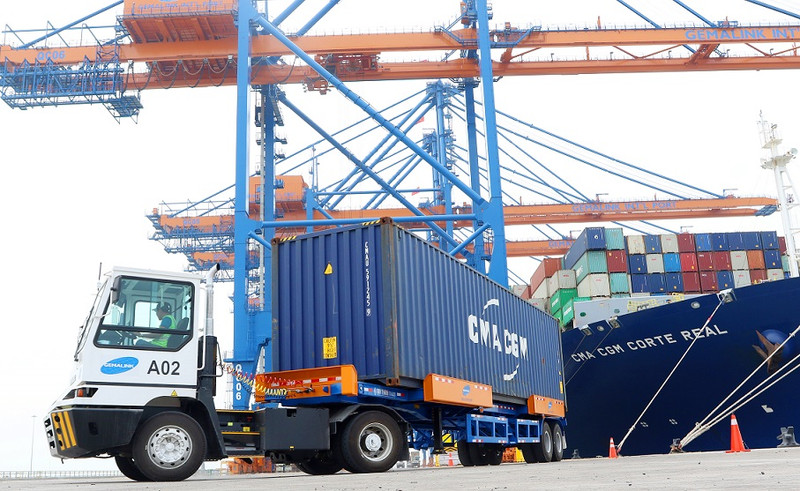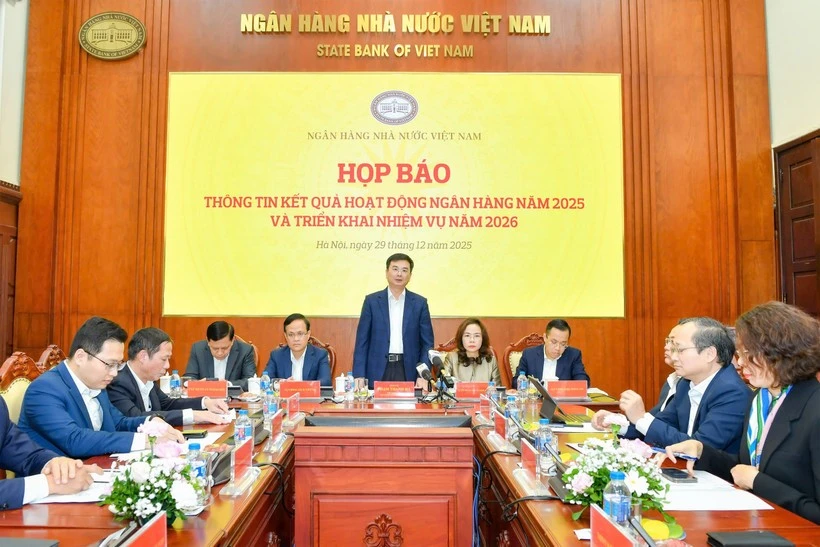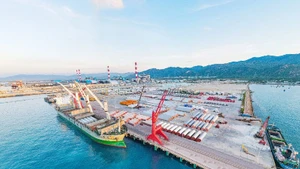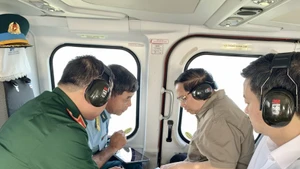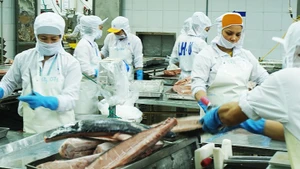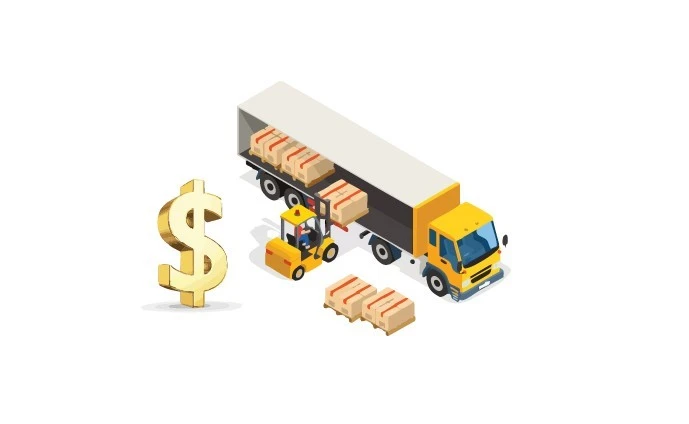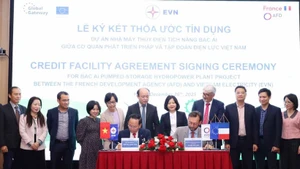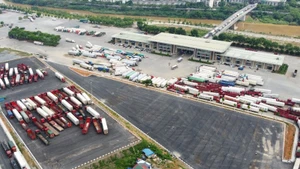Large volumes of work are staying ahead for the Vietnamese government and ministries this year, involving how to expanding trade and woo more foreign direct investment (FDI) which have been considered big impetuses for the economy to grow further, at a rate of at least 6.5% this year.
For example, Vietnam and Israel are set to conclude negotiations of a bilateral free trade agreement (FTA) within 2023 when they will celebrate their 30th anniversary of diplomatic relations, before officially inking the deal in early next year. The negotiations were kicked off in 2015.
“Once the FTA becomes valid, the trade and investment ties between both countries will flourish,” said the Ministry of Industry and Trade’s (MoIT) Department for Multilateral Trade Policies in a statement. “In the first eight months of 2022, Vietnam’s export turnover to Israel reached 548 million USD and its imports from the Middle Eastern country were worth 941 million USD.”
Israeli trade counselor at the Israeli Embassy to Vietnam Gal Saf also said, “Israeli companies are showing their interest to the Vietnamese market. They hope that the bilateral FTA will soon be signed and take effect so that they can soon benefit from advantages and incentives brought about by the FTA.”
Vietnam’s activities related to trade and investment also involves the country, together with other 11 member states of the Comprehensive and Progressive Agreement for Trans-Pacific Partnership (CPTPP), in conducting negotiations with the UK in the southern island of Phu Quoc this week.
“Vietnam will continue working with other CPTPP member states to soon complete negotiations for the UK to join the CPTPP. The UK’s membership will bring about wonderful opportunities in trade and investment for all participating nations,” said MoIT Minister Nguyen Hong Dien.
Vietnam currently has 15 FTAs entering into force and is now negotiating another two with Israel; and with the European Free Trade Association (EFTA) including Switzerland, Norway, Iceland, and Liechtenstein.
At this week’s meeting with Norwegian Ministry of Foreign Affairs Anniken Huitfeld in Switzerland, Vietnamese Deputy Prime Minister Tran Luu Quang suggested that both sides establish a joint committee on economy and commerce and boost the early conclusion of negotiations of the Vietnam-EFTA FTA.
Under the operational FTAs, import tariffs of almost all goods and services will be reduced and eliminated over certain periods, making it favourable for member states to boost their trade and investment within the trade blocs.
Enhancing economic diplomacy
In fact, all such activities on trade and investment can be only implemented with the support of diplomatic activities considered by the Politburo to be the trailblazer in boosting external economic cooperation.
On February 20, the government, for the first time, promulgated Resolution No.21/NQ-CP on an action plan for the 2022-2026 period to implement Directive No.15-CT/TW dated August 10, 2022 by the Party Secretariat on boosting economic diplomacy in service of national development until 2030.
“We will continue negotiating, signing, and completing an FTA network at many levels such as inter-region, region, and bilateralism which are in line with the country’s priorities and benefits,” read Resolution 21. “We will also study for the establishment of a long-term and stable bilateral economic and trade framework with important partners, while also boosting negotiations with new potential partners in order to expand the country’s development space.”
Especially, Vietnam will also “expeditiously consider participating in cooperation frameworks in new sectors such as digital economy, digital transformation, energy transformation, circular economy, green growth, and sustainable supply chains.”
The government has ordered ministries, government agencies, and localities to coordinate closely with the Ministry of Foreign Affairs (MoFA), the Ministry of Planning and Investment (MPI), and the MoIT to take advantage and propose frameworks, mechanisms, and measures to strengthen economic and trade cooperation, including digital economic cooperation, digital trade, investment, and specialised cooperation with government agencies of partner countries, international organisations, localities of foreign countries, and potential foreign investors on the basis of compliance with the law and international commitments that Vietnam has joined and signed. It is necessary to carefully study and fully assess the benefits and impacts for Vietnam before signing cooperation documents.
The government will also continue attracting and taking advantage of development resources (finance, technology, experience, knowledge, technical support, and policy consultancy) from participation and cooperation in multilateral mechanisms and forums, especially the UN, ASEAN, APEC, ASEM, Mekong Sub-region, WTO, IMF, WB, ADB, OECD, and WEF, as well as specialised cooperation mechanisms.
According to the MoFA, Vietnamese leaders are expected to have both tele-talks and direct meetings with leaders of many nations in the time to come to strengthen and expand trade and investment ties with them. They have also done that with Canada, China, the EU, France, Ireland, Japan, Kuwait, Russia, the US, and Venezuela.
The MoIT forecasted that after COVID-19, the country’s trade landscape is expected to strongly bounce back, with new solutions to be necessitated to drive it forward.
The government has set a target that in this year, Vietnam’s total goods export-import value will be about 795 billion USD, up about 8% against this year. In which the export turnover will be 398 billion USD – up over 8% on-year. The trade surplus will stay at about 1 billion USD, far lower than the 11.2 billion USD recorded last year.
In 2022, Vietnam’s export-import turnover reached 732.5 billion USD – up 9.5% on-year regardless of difficulties in export markets, especially big ones including the US, China, the EU, the Republic of Korea, and Japan – notably the US, China, and the EU holding the biggest shares of Vietnam’s exports, at 109.1 billion USD (29.34%), 58.4 billion USD (15.7%), and 47.1 billion USD (12.7%), respectively.
Vietnam’s exports to these three economies last year also witnessed an on-year rise, standing at 13.3, 4.5, and 17.4%, respectively.
Last year, Vietnam also witnessed domestic exporters reap an export turnover of 95.09 billion USD – up 6.5% on-year and accounting for 25.6% of total export turnover, while foreign exporters harvested an export turnover of 276.76 billion USD (including crude oil exports) – representing an on-year climb of 12.1% and responsible for 74.4% of total.
MoFA Standing Deputy Minister Nguyen Minh Vu said, “The diplomatic sector has actively promoted Vietnam’s economic and trade relations with partners, especially FTA partners; lobbied partners to remove trade barriers for Vietnamese goods; and timely provided information on the situation of partners’ policies and detected opportunities to expand exports.”
“Moreover, the diplomatic sector has continued to coordinate with the MoIT and other ministries to negotiate and upgrade existing FTAs, research and negotiate FTAs with new partners to further diversify markets, partners, and supply chains,” Vu said. “Regarding investment attraction, the MoFA has accompanied the MPI and agencies to promote mobilisation and attraction of high-quality investment, connect and support foreign enterprises to make new investments and expanding investment in Vietnam, while promoting exchanges and cooperation with investment funds, and researching international investment trends.”
Wooing more FDI
The government has also underlined that Vietnam will attract FDI selectively based on ensuring environment and sustainability.
“Priorities will be given to projects with high added values and advanced technology in service of infrastructure development, digital economy, digital transformation, and green growth,” said DPM Quang. “We will also focus on boosting economic diplomatic activities in order to lure in high-quality FDI from multinational corporations. This will help elevate Vietnam’s status in the global supply chains.”
According to the MoFA, in 2023, Vietnam will continue carrying out group-oriented diplomatic activities to woo large projects worth multi-billions of US dollars, in the context of increasing competition in luring this kind of funding in the region.
The MPI reported that accumulatively as of February 20, 2023, total newly-registered and newly-added FDI and capital contributions and stake acquisitions in Vietnam hit nearly 442.3 billion USD for over 36,600 valid projects.
In January-February 20, the total capital of these types reached 3.1 billion USD, down 38% on-year. Specifically, the newly-registered capital touched 1.76 billion USD - up by 2.8 times on-year. However, the newly-added capital stood at 535.4 million USD – down 85.1% on-year, and capital contributions and stake acquisitions were at 797.9 million USD – up 3.7% on-year.
“Group-oriented diplomatic activities in particular and economic diplomatic activities in general are making great contributions to Vietnam’s efforts in FDI attraction and trade expansion,” said Prime Minister Pham Minh Chinh at a recent conference on boosting economic diplomacy in service of national development.
Vietnam has over 50 bilateral and multilateral donors, with total committed official development assistance (ODA) of over 90 billion USD for the country.
“This achievement has been contributed to by the diplomatic sector, which has actively been seeking more ODA for Vietnam,” said MPI Minister Nguyen Chi Dung.
The MoFA also reported that the diplomatic sector has contributed to helping Vietnam attract a large sum of overseas remittance, at 17.2 billion USD in 2020 and over 18 billion USD in 2021, and nearly 19 billion USD last year.
